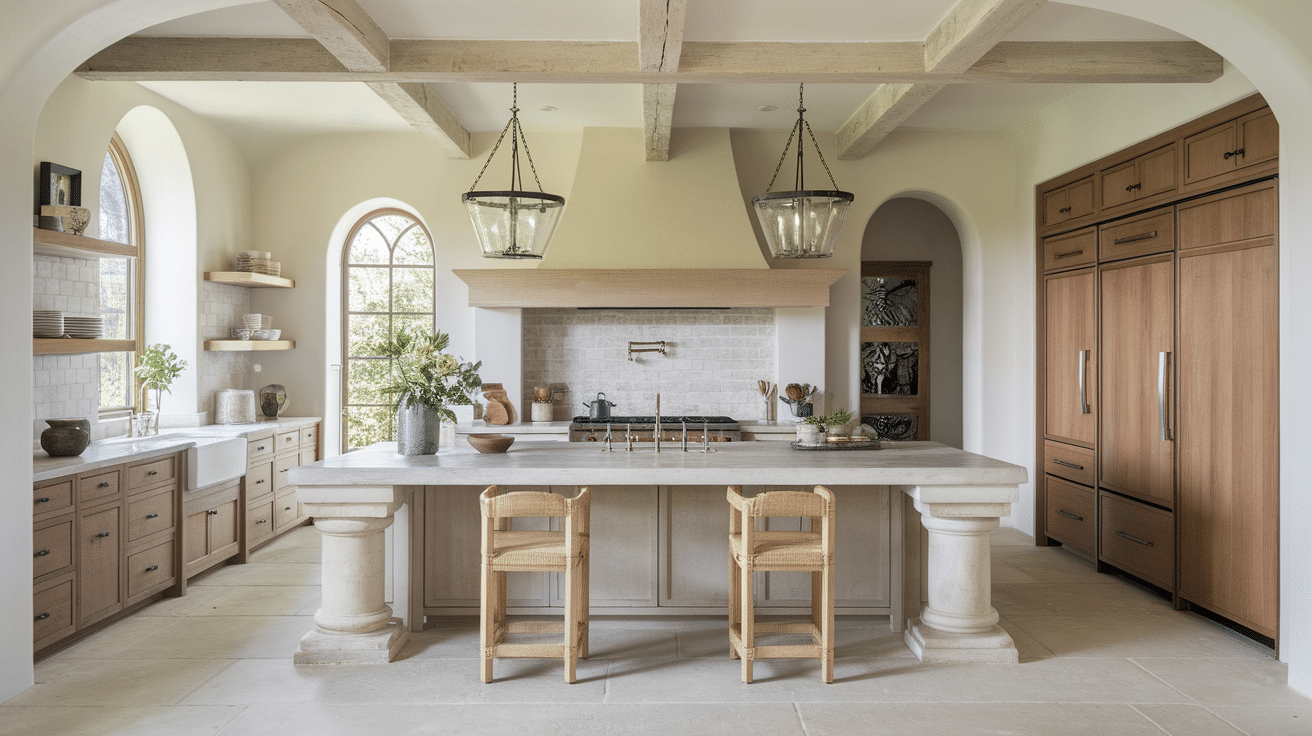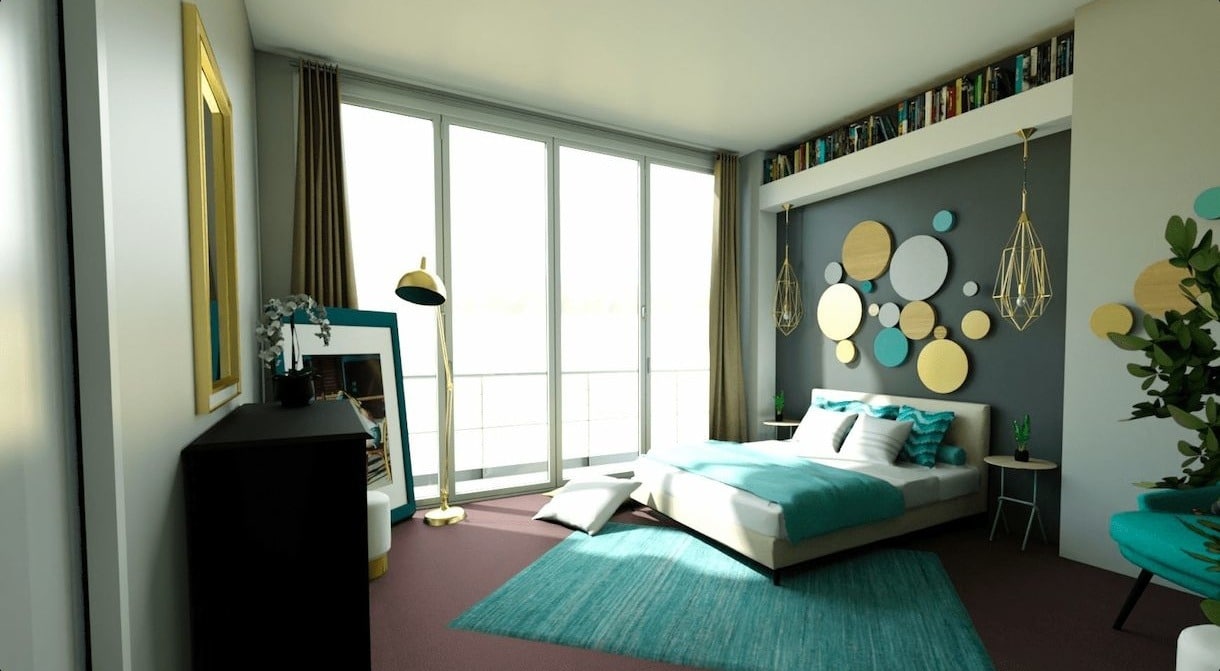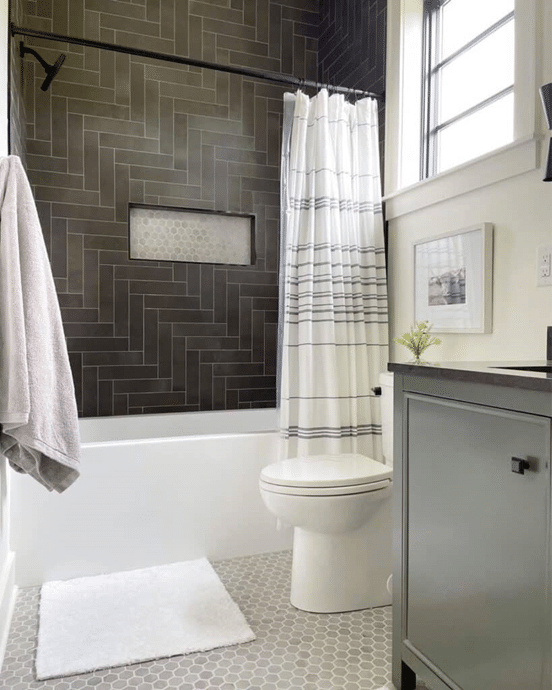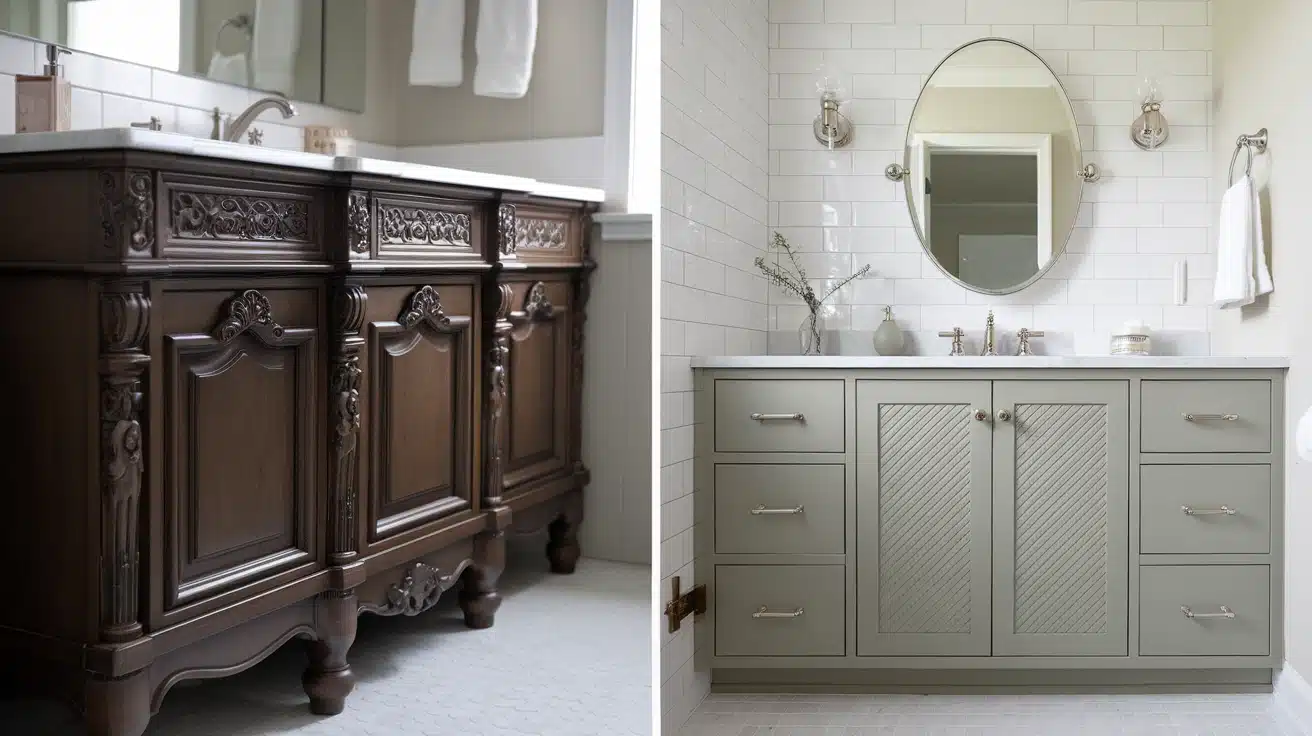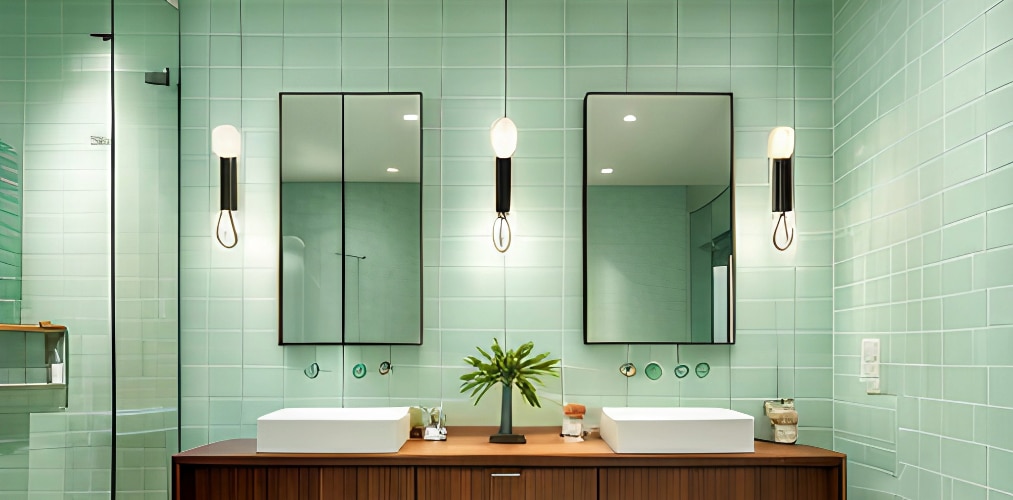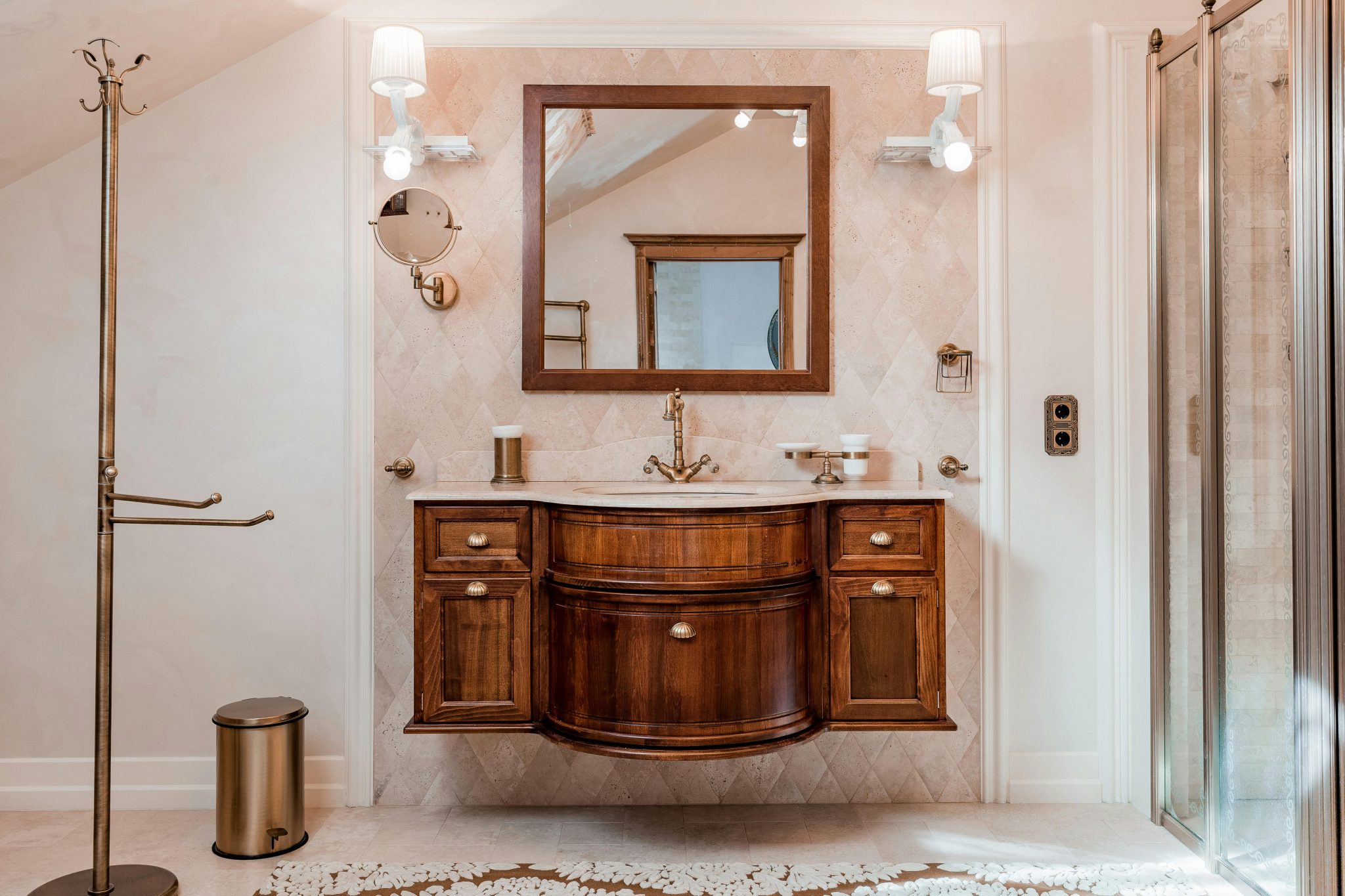Kitchen Island with Post: Design Tips & Ideas
Kitchen islands with posts have become increasingly popular in modern home designs. They combine practical support with attractive style elements, a thoughtful blend of function and beauty that makes them worth considering for any kitchen update.
In this guide, we’ll learn how to maximize kitchen island posts, if they’re structural necessities or purely decorative additions. We’ll cover everything from choosing the right post style to practical tips on materials, placement, and maintenance.
By the end, you’ll understand how posts can solve common kitchen design challenges while improving your space’s visual appeal, becoming standout features that reflect your style.
Why Choose a Kitchen Island with Post?
Kitchen islands with posts blend style and function beautifully. Posts provide essential support in open floor plans while adding character to your design. Instead of hiding structural elements, incorporating them into your island turns necessity into an attractive feature.
These posts complement various styles, from rustic wooden columns in farmhouse kitchens to sleek metal supports in modern designs.
Beyond aesthetics, they offer practical benefits like built-in storage for wine bottles or cookbooks, hooks for utensils, and even electrical outlets for charging stations. They also provide crucial support for heavy stone countertops.
Kitchen island posts offer more than looks and support. They can include built-in storage like wine racks, shelving for cookbooks, or hooks for hanging utensils.
By thoughtfully integrating posts into your kitchen island, you can create a distinctive, custom look that solves practical problems while enhancing your cooking space.
Applications of Kitchen Island Posts
Posts form the backbone of many larger kitchen islands. They allow for bigger, more useful work surfaces without sagging or stability issues.
This is especially important when using natural stone countertops, which are heavy and need proper support to prevent cracking over time.
Well-designed posts create visual interest in your kitchen. They can mark the border between cooking and eating areas or highlight special zones of the island.
Decorative posts draw the eye and become conversation-starters, making your kitchen feel more welcoming and carefully designed.
Classic vs. Modern Designs of Kitchen Island with Post
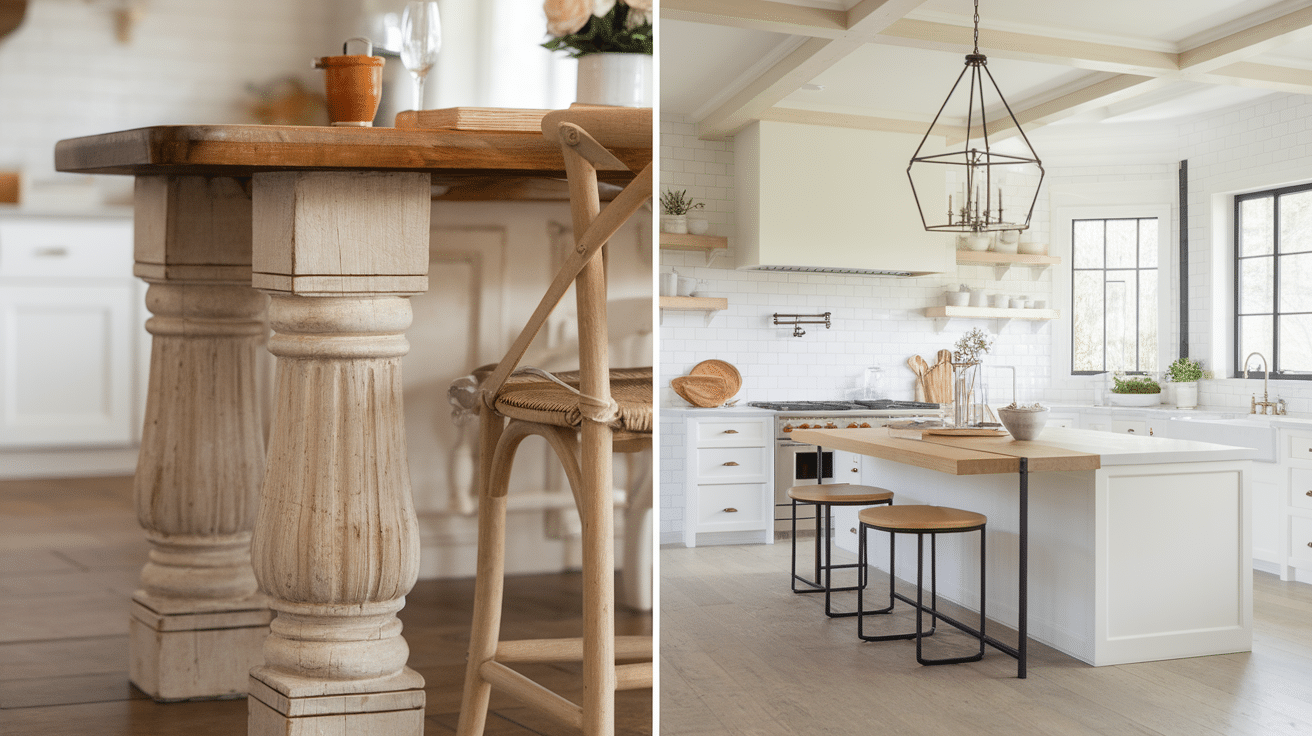
The type of post you choose for your kitchen island can set the tone for your entire kitchen design. With many options available, picking the right style means thinking about how it looks and how it works with your kitchen’s layout and uses.
Kitchen island post styles generally fall into two main groups: traditional and modern. Each has its look and feel, which can change the overall appearance of your kitchen. Here’s how they compare:
| Design Type | Key Features | Best For | Visual Impact |
|---|---|---|---|
| Traditional Posts | Columns with detailed carving, turned wood with curves, fluted designs | Farmhouse, country, and classic kitchen styles | Warm, homey feeling with crafted details |
| Contemporary Posts | Clean lines, simple shapes, often metal or wood with minimal detail | Modern, industrial, and open-plan kitchens | Clean, simple look that blends rather than stands out |
Kitchen Island Support Posts: Material Guide
Choosing the right support posts for your kitchen island can significantly impact its functionality and aesthetic appeal. The posts not only provide structural support but also serve as design elements that can upgrade your kitchen’s overall style.
This section covers various material options to help you make an informed decision about your home renovation project.
1. Wood
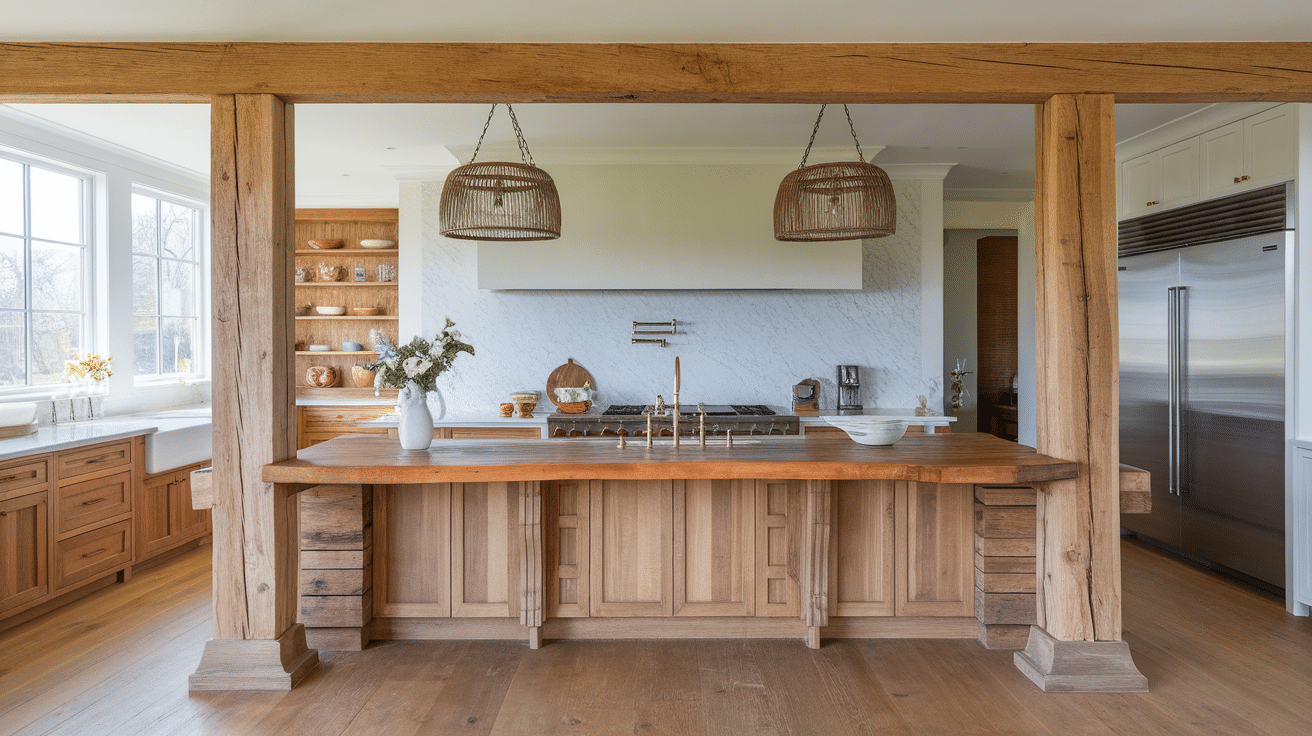
Wood posts bring warmth and a natural feel to kitchen islands. Options like oak give durability, while walnut offers rich color.
Many homeowners choose wood posts to match their cabinetry for a tied-together look. Reclaimed wood posts add history and unique marks that tell a story in your kitchen space.
2. Metal
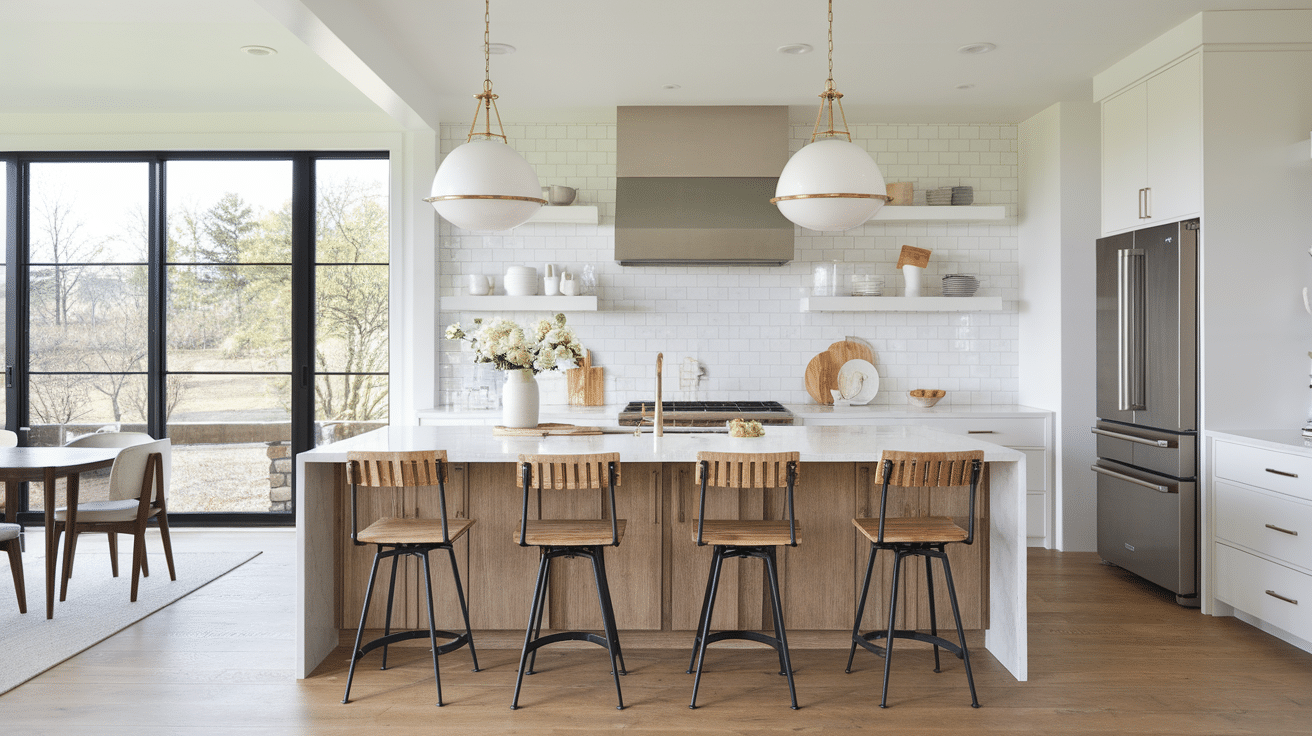
Metal posts create a crisp, clean look, perfect for newer kitchen styles. Stainless steel, brushed nickel, or matte black metal all work well in different settings.
Metal posts often take up less visual space than wood, making them good choices for smaller kitchens where you want to keep an open feel.
3. Stone/Granite Posts
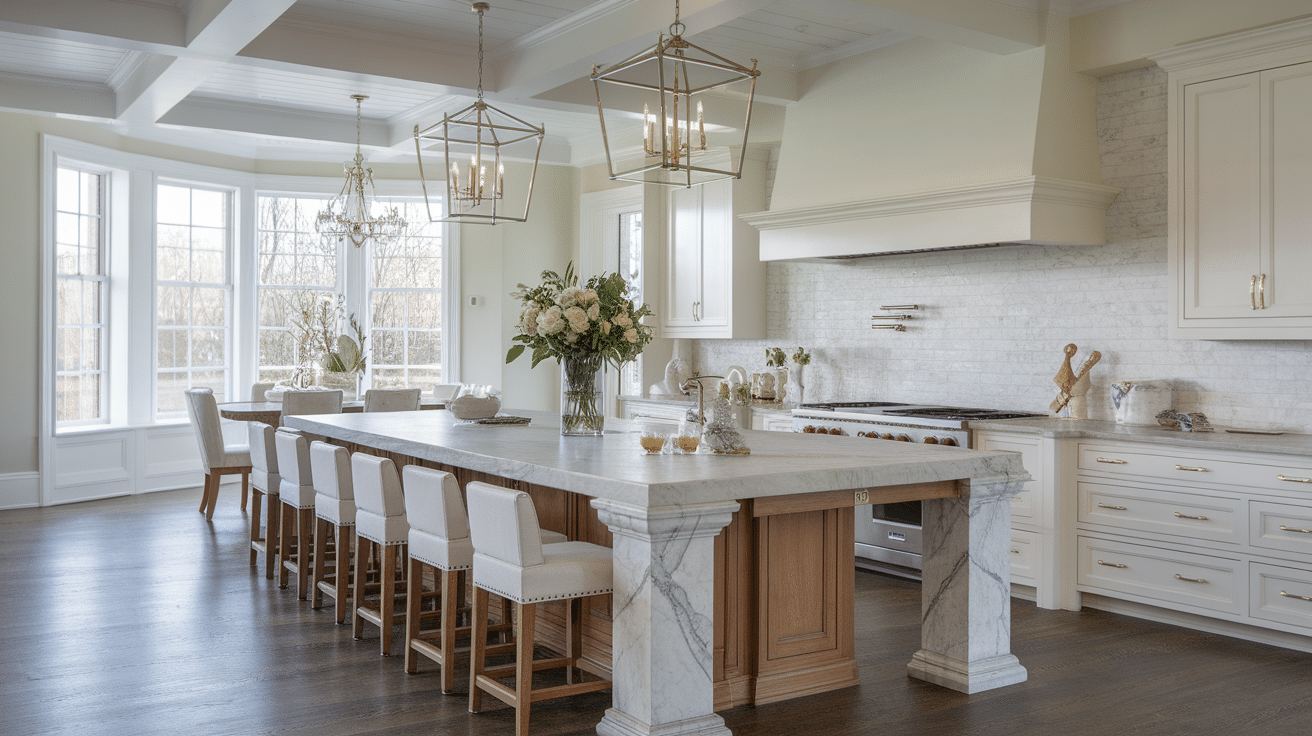
For truly special kitchens, stone posts offer both beauty and strength. While more costly than other options, granite or marble posts create a high-end look that matches the stone countertops.
These posts work as statement pieces that show attention to detail in kitchen design.
Post Styles for Function and Beauty
When designing a kitchen island, the support posts you choose can significantly impact the space’s structural integrity and aesthetic appeal.
These essential elements blend form and function, serving as both architectural supports and design statements in your kitchen.
1. Square Posts

Square posts give a strong, steady look that fits well in newer kitchen designs. Their straight lines match modern cabinets and appliances.
Square posts can be made from any material – wood for warmth or metal for a more industrial touch.
2. Round Columns
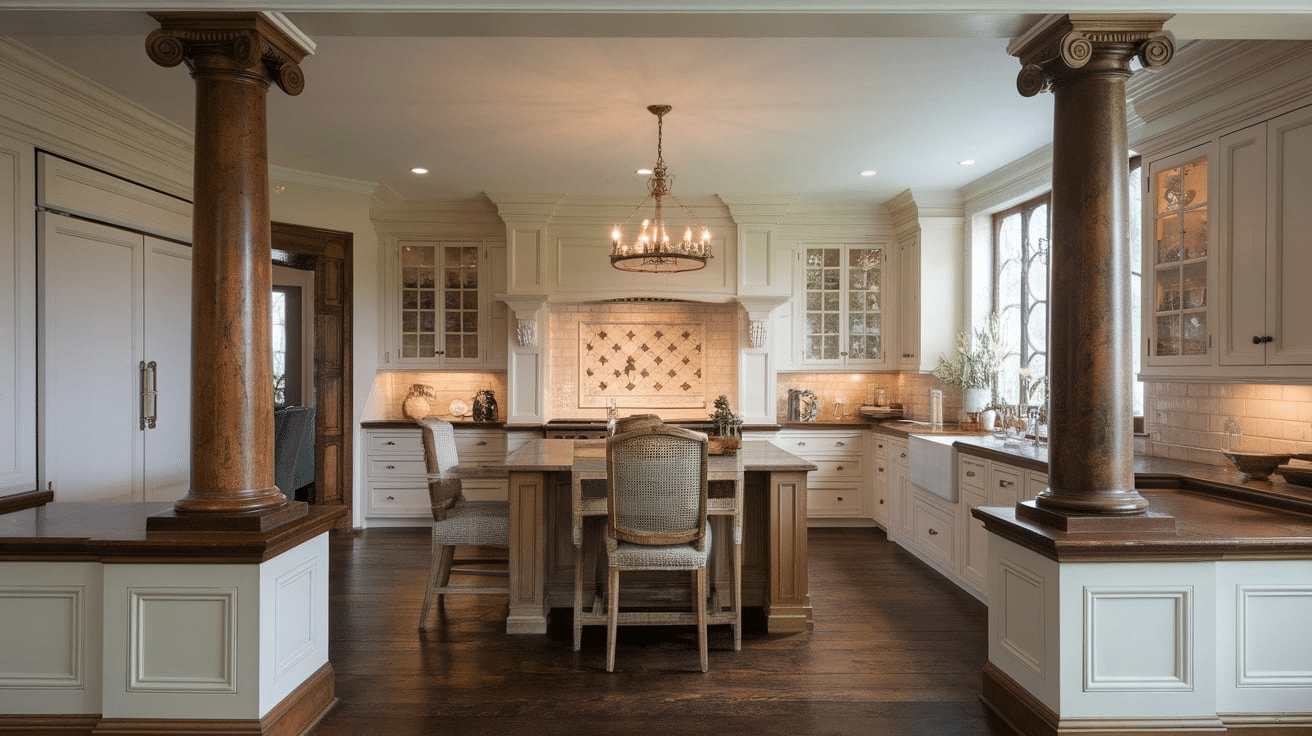
Round posts bring a classic, timeless quality to kitchen islands. They often include details near the top and bottom, similar to columns in older buildings.
This style fits well in traditional homes where other architectural details have curved or rounded elements.
3. Corner Posts
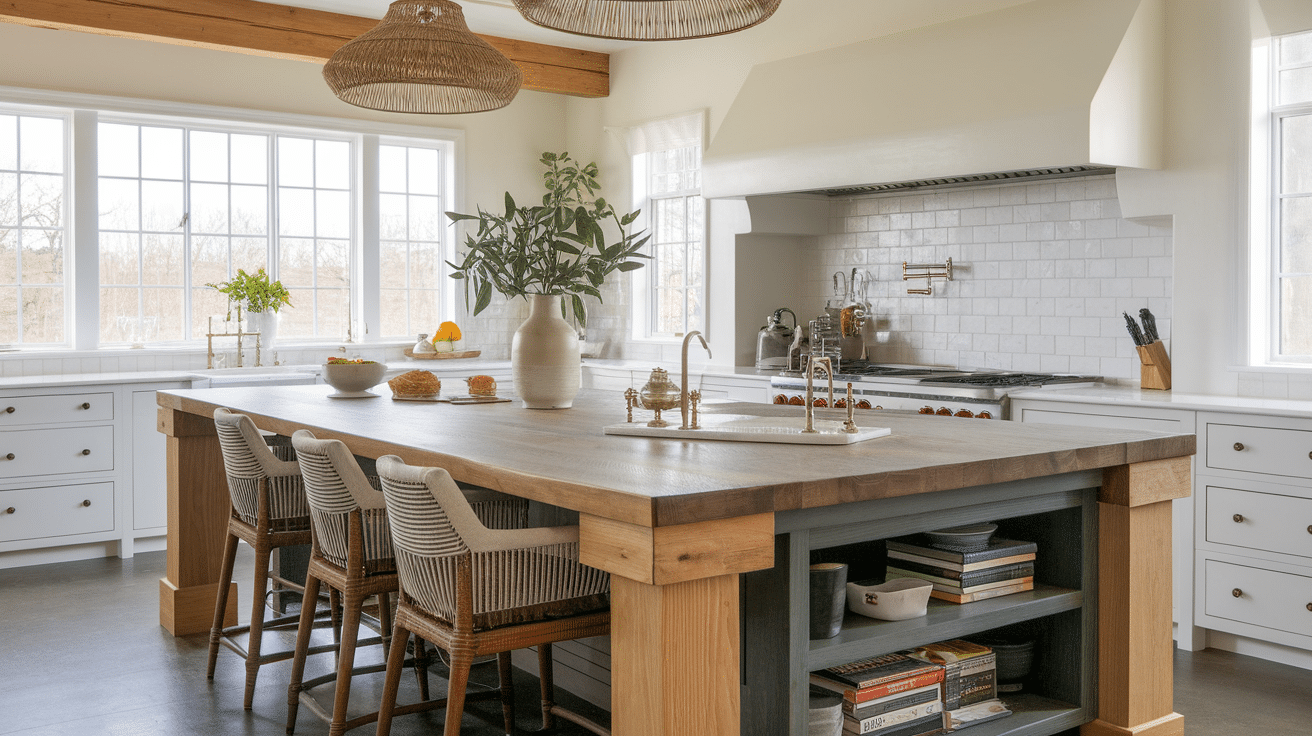
Corner posts sit at the edges of kitchen islands, marking boundaries while providing support. These posts can be slightly smaller than center posts while still doing their job.
Corner posts work well when you want to define different areas of a large island for cooking and eating.
How to Integrate a Post into Your Kitchen Island Design
Placing posts on your kitchen island requires careful thinking about both looks and function. A well-placed post can become a key design element rather than just a necessary support structure.
With thoughtful planning, posts can enhance your kitchen’s style while serving their structural purpose.
Choosing the Right Location
The best spot for your island post depends on your kitchen layout and how you use the space. Corner posts work well to mark the edges of an island while staying out of the way of daily kitchen tasks.
Edge posts can help divide cooking areas from eating spaces on longer islands. Center posts make sense for very large islands that need extra support in the middle.
When placing posts, consider how you move in your kitchen. A poorly placed post can block the path between your stove, sink, and fridge—the main working triangle of any kitchen.
Test your layout by walking through the space and checking that posts don’t create tight spots or awkward corners that might cause problems later.
Making the Post Part of Your Design
When adding seating to an island with posts, place the posts where they won’t bump knees or limit legroom.
Set posts back slightly from the edge where chairs will go, or use them to mark the ends of seating areas. This approach keeps the posts useful without making them get in the way.
For a tidy, built-in look, consider how posts can complement your cabinets. Posts can be boxed in with matching cabinet panels so they look like part of the original design.
Some homeowners use half-wall designs where posts sit partly in a wall and partly in the island, creating a smooth look. This method hides the structural parts while keeping the visual appeal of the post design.
Popular Kitchen Island Post Designs
Kitchen island posts come in many styles to fit different spaces and needs. Here are some of the most common designs that homeowners choose for their kitchens.
Kitchen Island with Post and Seating

Posts work well at the ends of seating areas, giving support without blocking people sitting at the island. This keeps the area under the counter open for legs and stools while still providing structure.
Posts can act as natural dividers between cooking and eating zones. When placed between these areas, they create a visual break that helps each space feel like it has its purpose, perfect for busy family kitchens.
Small Kitchen Island with Post
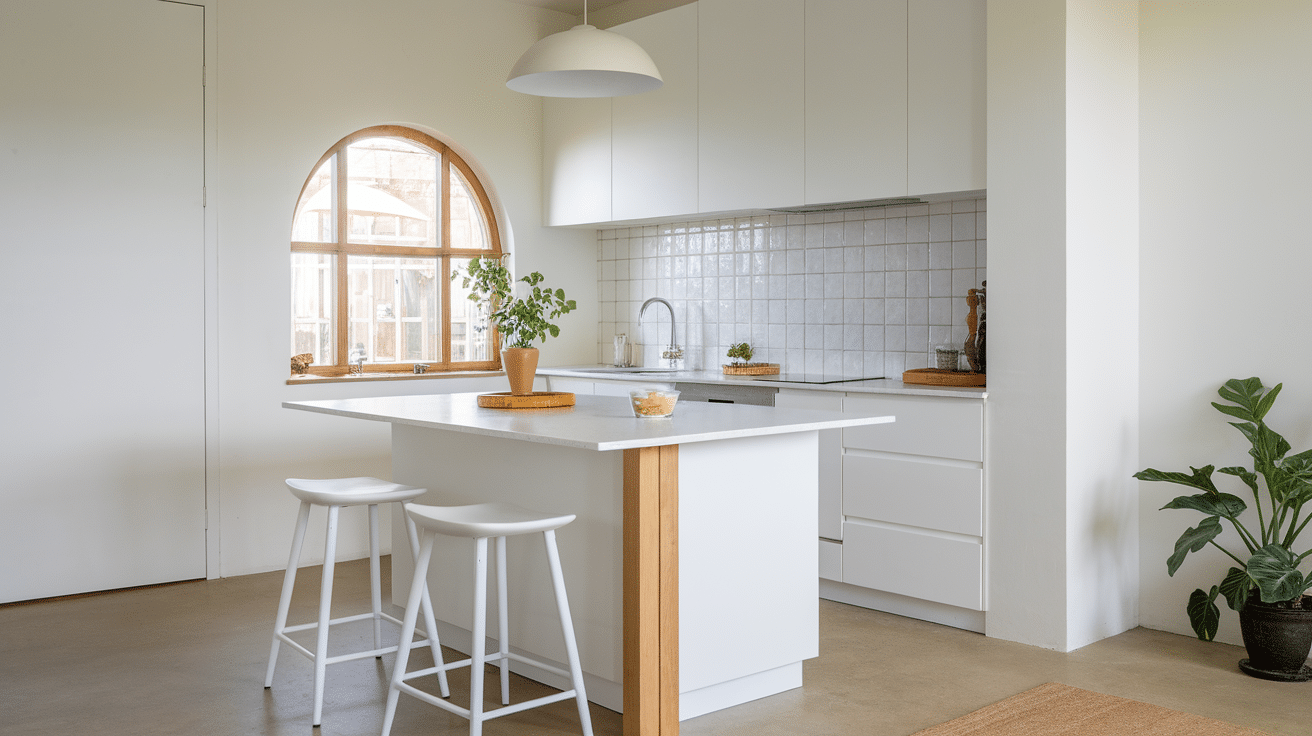
In smaller kitchens, thinner posts take up less room while still giving needed support. Consider using a single post at one corner rather than multiple posts that might make the kitchen feel cramped.
Posts in small kitchens can serve multiple purposes, with hooks for hanging towels, built-in outlets, or slim shelving for cookbooks. These features turn a support need into a helpful kitchen element.
Kitchen Island with Post to Ceiling
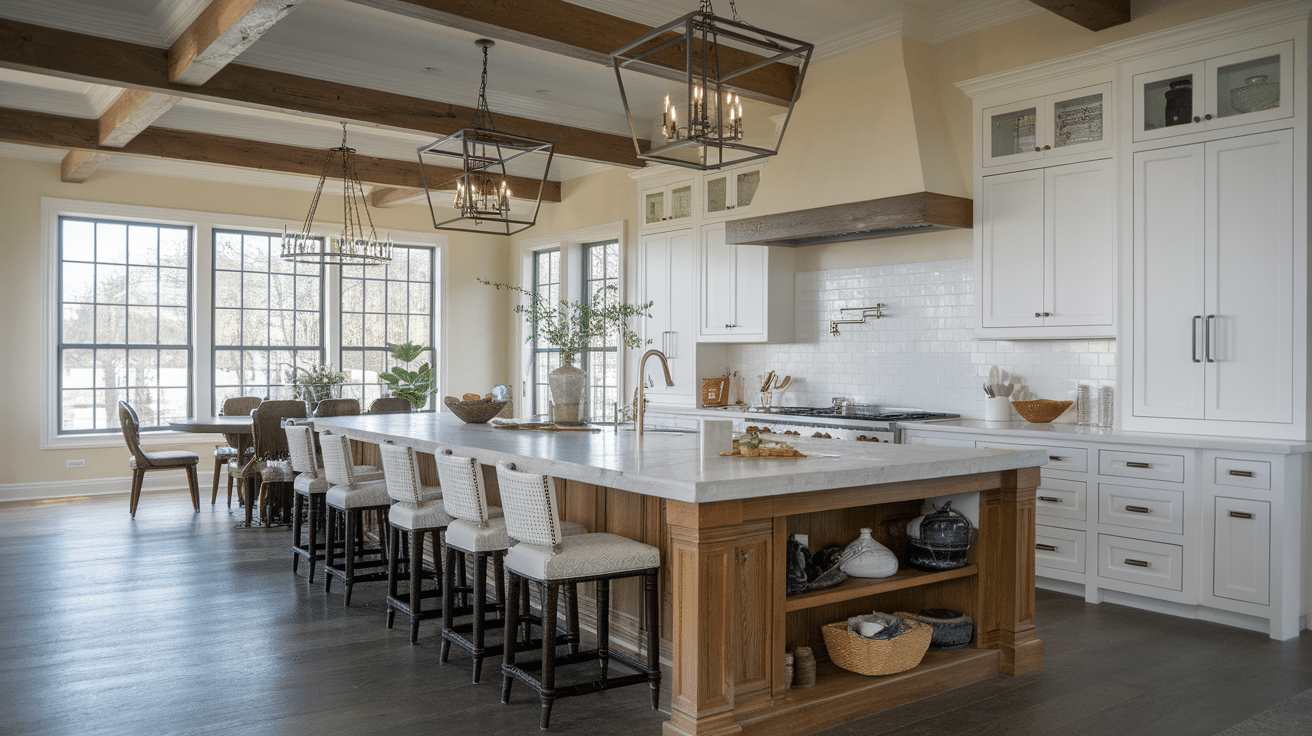
Extending posts from island to ceiling creates a strong visual statement in kitchens with higher ceilings. This design draws the eye upward, making the room feel larger.
Full-height posts also provide structural benefits, supporting both the island and the ceiling.
These designs work best in spaces with ceilings of 9 feet or more. To keep the look balanced, match your posts to other woodwork in the room, like crown molding or ceiling beams, for a cohesive design.
Materials and Finishes for Your Kitchen Island Posts
The materials and finishes you choose for your kitchen island posts can make a big difference in how your kitchen looks and how well it holds up over time.
Selecting the Best Materials for Durability and Style
The material selection process should balance appeal preferences with practical considerations such as your kitchen’s existing elements and your lifestyle needs.
Each material brings its unique properties that affect not only appearance but also longevity, maintenance requirements, and overall performance in a high-traffic kitchen environment.
| Feature | Wood Posts | Metal Posts |
|---|---|---|
| Look | Warm, natural, traditional | Cool, sleek, modern |
| Cost | Mid-range for standard woods, higher for exotic types | Generally higher than wood, especially for custom designs |
| Durability | Good with proper sealing, may need refinishing | Excellent, resistant to damage and moisture |
| Maintenance | Needs cleaning and occasional resealing | Simple cleaning, no special treatments needed |
| Weight | Lighter than metal, easier to install | Heavier, may require additional floor support |
| Kitchen Styles | Farmhouse, country, traditional, craftsman | Industrial, contemporary, minimalist |
Wood offers a timeless charm but needs more care over time, while metal provides lasting durability with minimal maintenance.
For most kitchens, the right choice often comes down to which material better matches your existing cabinets, countertops, and overall home style.
Color and Texture Tips
When choosing kitchen post colors, aim for harmony with your existing elements. Many homeowners match posts to their cabinets for a cohesive look, while others coordinate them with the island color if it differs from the main cabinetry.
For best results, select a post color that complements at least two of your major kitchen elements- cabinets, countertops, or flooring.
Contrasting colors can create striking design features. Dark posts against light cabinets make a bold statement, while white posts against dark cabinetry create a fresh, bright effect.
To make this approach work well, echo the contrasting color in other kitchen elements like fixtures, hardware, or appliances to tie the design together.
Maintenance Tips for Kitchen Island Posts
With regular care, your kitchen island posts will maintain their beauty and structural integrity for years to come. Simple maintenance routines protect these features from the spills, heat, moisture, and daily impacts common in busy kitchens.
- Clean wood posts weekly using a soft cloth with a mild soap solution.
- Apply furniture wax or wood polish every 3-6 months for protection.
- Re-seal wooden posts annually with polyurethane to prevent water damage.
- Address small scratches promptly with matching wood markers.
- Dust metal posts weekly with a damp cloth to remove fingerprints.
- Use stainless steel cleaner monthly on metal posts to preserve their shine.
- Clean stone posts only with stone-specific cleaning products.
- Apply stone sealer yearly to granite or marble posts to prevent staining.
- Use coasters and trivets near stone posts to protect from heat damage.
Conclusion
Kitchen islands with posts offer a smart mix of looks and purpose for today’s homes. They solve real design problems while adding charm to your cooking space.
The right post can turn a plain island into a standout kitchen feature that fits your unique style. As you plan your next kitchen update, think about how posts might work in your space. They can be simple and low-cost or become the center of your kitchen’s design.
Take time to examine different styles, materials, and placements to find what best suits your kitchen and budget. Ready to start your kitchen project? Your perfect island with posts is waiting to be built.
Frequently Asked Questions
Why are people getting rid of kitchen islands?
Some remove islands to create more floor space, improve traffic flow, or switch to different layouts that better suit their cooking habits.
Is it cheaper to buy or build a kitchen island with posts?
Building is often cheaper if you have basic skills. Pre-made islands cost more but save time and ensure proper construction.
What trend is replacing the kitchen island?
Kitchen peninsulas and multi-height work tables are gaining popularity as space-saving alternatives that still offer extra counter space.

